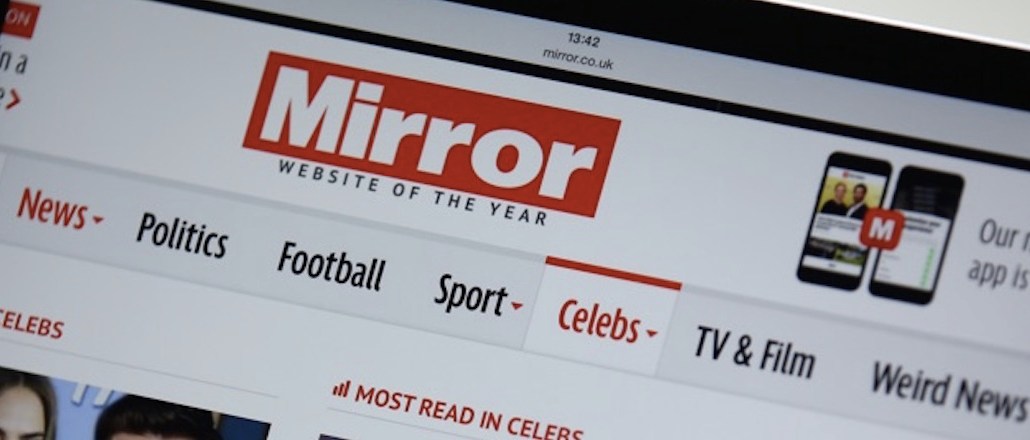
The number of people who view Trinity Mirror Group content exclusively on mobile has exploded in the past few years. The U.K. newspaper group, home to the Daily Mirror and myriad regional titles, had 25.3 million unique visitors in December, with 18 million coming only on mobile devices, according to comScore, which is large compared to other publishers in the market.
The mobile growth stems from the company’s focus on social distribution and investment in mobile products (it has 14 apps across its titles), all with the goal of getting mobile to offset print revenue declines, said Trinity Mirror’s strategy director Piers North.
Now it’s pulling out all the stops to better monetize that audience. Here’s how it plans to do so:
In-app mobile ad formats
The typical app reader is more loyal to a brand than mobile Web, so the company has been focused on in-app advertising. That means introducing new mobile products, like its latest, news aggregator app Perspecs, and experimenting with in-app ads that are embedded in the editorial content and that can be replicated across devices. “Native in-feed ads are generally more accepted by consumers, too, which helps with ad blocking on the rise,” said North.
Reducing ad clutter
The rise in ad blocking (one in five people are now blocking them on desktop in the U.K., according to IAB/YouGov). That’s led publishers including Trinity Mirror to clean up their sites so they run faster and get rid of intrusive ads that could give people a reason to use an ad blocker. Only 1-2 percent of Trinity Mirror’s mobile impressions companywide are being blocked, but the company is monitoring whether that rises, North said.
Using untapped location data
There’s growing skepticism that mobile banner ads are working. The Guardian has ditched the mobile banner ad, while others are moving to adopt native ads on mobile. North believes there’s still value in the banner ad, but that they need to work harder by being smarter with data, specifically location data.
Trinity Mirror has been offering advertisers location-based push notifications for a few years, but North believes it can do more to serve more location-relevant ads. “We’re not blindly buying the clichés around mobile and location, like saying we can target people as they walk past a specific store,” North said. “But we do think there are some huge opportunities here, which can help us drive up CPMs.”
Social distribution
Mobile and social distribution are intrinsically linked, given wholly 35 percent of the newspaper group’s mobile visits come from social channels. So Trinity Mirror is pushing out more of its content to third-party platforms like Facebook and Apple News, while also making its pages compliant with Google AMP, the fast-loading mobile pages feature. It’s gone all-in on Facebook’s Instant Articles for three of its titles, The Mirror, Manchester Evening News and WalesOnline.
More in Media

What publishers are wishing for this holiday season: End AI scraping and determine AI-powered audience value
Publishers want a fair, structured, regulated AI environment and they also want to define what the next decade of audience metrics looks like.

Media giant Essence launches a marketplace for Black women-led brands
Essence has launched WeLoveUs.shop, a new online marketplace dedicated to Black women-led brands.

In Graphic Detail: The state of AI referral traffic in 2025
The stats reveal a new audience pipeline forming outside of traditional search and social platforms.





